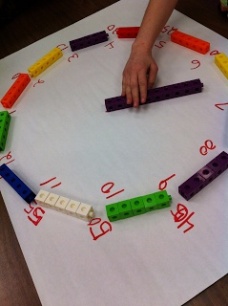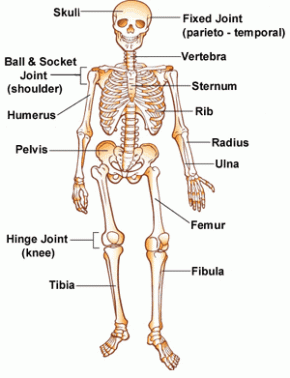Hello students and parents!

Be sure to check your folders as there is lots of information about the ROM field trip coming up next month! Here is a description of the trip in case it was misplaced! Be sure to contact me for the permission form if it was lost!
The Rocks and Minerals excursion will be held at the Royal Ontario Museum. The museum is located at 100 Queens Park in downtown Toronto, Ontario. The galleries and exhibits are designed for exploration and discovery of treasures from all around the Earth and space. This particular field trip will focus on the observation and interaction with various rocks and minerals that the world has to offer. The ROM is a great place for children of all ages to learn through hands-on activities and interactive programs. The educational program consists of over 4.5 billion years of historical collections and reflects many components of the standards found in the Ontario curriculum.
The reason the ROM was chosen for this particular unit is so the children will experience a hands-on lab, where they can physically interact with over fifty specimens of rocks and minerals, as well as enjoy the entertainment of experts who will explain the various important details with the students. We will also take a tour through the exceptional galleries of dazzling gems, ancient fossils, and rocks and minerals in order to allow students to experience the riches of the earth. The children will then have the opportunity to eat lunch in the restaurant and roam the ROM with their groups and parent volunteers throughout the afternoon Discovery Period. This specific exhibit has been chosen to be the main component of the Rocks and Minerals Unit, as the children will have attained basic knowledge in order to get the most out of this experience.The overall goal is to identify and assess different uses and needs for rocks and minerals through the topics of: science, technology, math and engineering.
Ontario Curriculum Expectations For This Unit Are As Follows:
Science Expectations
1. Relating Science and Technology to the Environment
1.1 Assess the social and environmental costs and benefits of using objects in the built environment that are made from rocks and minerals.
1.2 Analyze the impact on society and the environment of extracting and refining rocks and minerals for human use, taking different perspectives into account.
2. Developing Investigation Skills
2.2 Use a variety of tests to identify the physical properties of minerals (e.g., hardness [scratch test], colour [streak test], magnetism).
2.3 Use a variety of criteria (e.g., colour, texture, luster) to classify common rocks and minerals according to their characteristics.
2.4 Use scientific inquiry/research skills to investigate how rocks and minerals are used, recycled, and disposed of in everyday life.
2.5 Use appropriate science and technology vocabulary, including hardness, colour, luster, and texture, in oral and written communication.
2.6 Use a variety of forms (e.g., oral, written, graphic, multimedia) to communicate with different audiences and for a variety of purposes(e.g., use a graphic organizer to show how rocks and minerals are used in daily life on their brochure).
3. Understanding Basic Concepts
3.1 Describe the difference between rocks (composed of two or more minerals) and minerals (composed of the same substance throughout), and explain how these differences determine how they are used.
3.2 Describe the properties (e.g., colour, luster, streak, transparency, hardness) that are used to identify minerals.
Math Expectations
Measurement
• Determine, through investigation, the relationship between grams and kilograms.
• Select and justify the most appropriate standard unit to measure mass (i.e., milligram, gram, kilogram) and the most appropriate standard unit to measure the capacity of a container (i.e., milliliter, liter)
• Compare and order a collection of objects, using standard units of mass (i.e., gram, kilogram)
Language Expectations
Oral Communication
1. Listen to Understand Purpose
1.1 Identify purposes for listening in a variety of situations, formal and informal, and set goals related to specific listening tasks.
Active Listening Strategies
1.2 Demonstrate an understanding of appropriate listening behaviour by adapting active listening strategies to suit a variety of situations, including work in groups.
Demonstrating Understanding
1.3 Demonstrate an understanding of the information and ideas in a variety of oral texts by summarizing important ideas and citing important details.
Extending Understanding
1.6 Extend understanding of oral texts by connecting the ideas in them to their own knowledge, experience, and insights; to other texts, including print and visual texts; and to the world around them.
2. Speaking to Communicate
Purpose
2.1 Identify a variety of purposes for speaking.
2.2 Demonstrate an understanding of appropriate speaking behaviour in a variety of situations; including paired sharing and small- and large-group discussions.
Writing
1. Developing and Organizing Content
1.1 Identify the topic, purpose, and audience for a variety of writing forms.
Developing ideas
1.2 Generate ideas about a potential topic using a variety of strategies and resources.
Research
1.3 Gather information to support ideas for writing using a variety of strategies and oral, print, and electronic sources.
Classifying Ideas
1.4 Sort and classify ideas and information for their writing in a variety of ways.
Review
1.6 Determine whether the ideas and information they have gathered are relevant and adequate for the purpose, and do more research if necessary.
Learning Goals
• Students will learn the basic facts of rocks and minerals.
• Students will learn the physical characteristics of various rocks and minerals.
• Students will learn the different uses of various rocks and minerals in our everyday lives.
• Students will learn the impacts that specific rocks and minerals have on technologies, the environment and the world at large.
Integral Components of the Excursion:
• Students will need to write down key points of their general observations throughout the trip.
• Research is to be conducted on the chosen rock or mineral of each group.
• Findings of their research are to be recorded on their worksheet so that they have enough information to complete their brochure.




